Physical Address
304 North Cardinal St.
Dorchester Center, MA 02124
Welcome to the fascinating world of bulk shipping of coal, a vital cog in the machinery of global energy and industrial markets. As we dive into this comprehensive exploration, we’ll uncover the intricacies of transporting massive quantities of coal across the oceans and continents. From the mines to the power plants and steel mills, the journey of coal is a testament to human ingenuity in logistics and engineering.
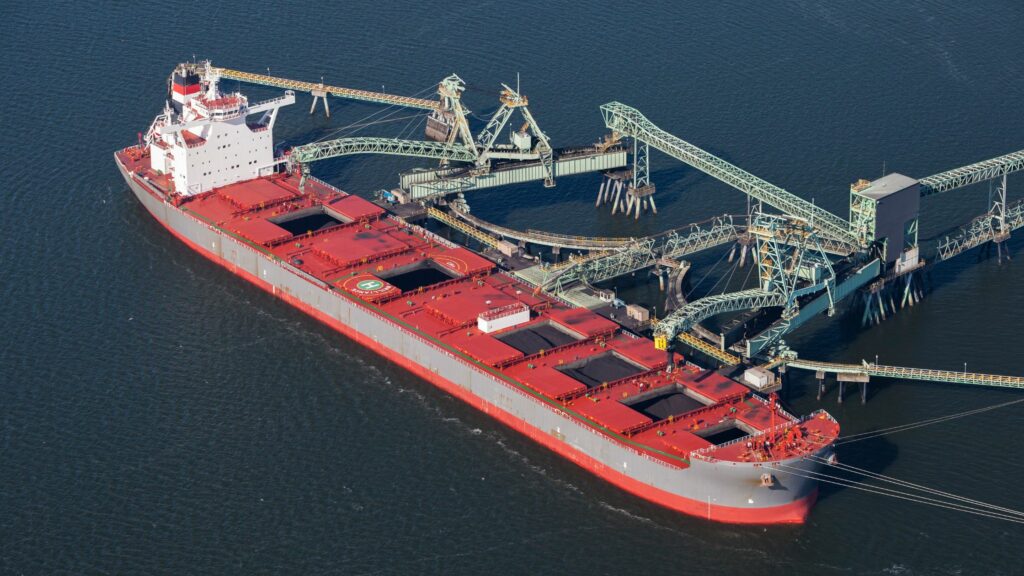
We’ll navigate through the reasons behind shipping coal in bulk, the efficiency it brings, and the specialized vessels that make it all possible. Along the way, we’ll also touch on the environmental impacts and the cutting-edge safety measures ensuring the wellbeing of our planet and those who inhabit it. As the world shifts towards cleaner energy sources, we’ll also peek into the future of coal shipping.
Bulk shipping of coal is a logistical process that involves the transportation of large quantities of coal, usually over water, using specially designed vessels known as bulk carriers or bulk freighters. This method is pivotal for the global energy market, as coal remains a significant source of electricity generation and an essential raw material for steel production through its combination with iron ore. The primary goal of bulk shipping of coal is to efficiently and cost-effectively move this crucial commodity from regions of production to areas of demand across the globe.
The process begins at coal mines, where after extraction, coal is prepared for shipping, which may include washing and sorting to meet the specifications of the destination market. Once ready, the coal is transported, often via rail or barge, to a port equipped with the infrastructure to load bulk carriers. These vessels are engineered to maximize capacity and safety, featuring large, open holds and advanced ballast systems to manage stability during voyages.
Upon reaching the destination port, the coal is unloaded, often with the aid of grab cranes or conveyor systems, and then distributed to end users like power plants or steel mills. The efficiency of bulk shipping allows for coal to be an economically viable energy source even when transported over long distances. Understanding the critical role of bulk shipping in the coal supply chain sheds light on its importance to industrial sectors and the global economy.
Shipping coal in bulk is primarily driven by economies of scale and efficiency in handling and transportation. Bulk shipping allows for the movement of large volumes of coal, reducing the cost per unit and making it an economically viable option for long-distance transport. This method leverages specialized vessels, such as bulk carriers and cargo ships, which are designed to maximize cargo space and minimize handling costs.
Furthermore, efficiency is significantly enhanced through the use of bulk shipping methods. It streamlines the loading and unloading processes at ports, utilizing advanced systems like conveyor belts and grab cranes. This not only speeds up the transfer of coal from the ship to the shore (and vice versa) but also minimizes the risk of spillage and environmental contamination.
Given the global demand for coal in power generation and steel manufacturing, the ability to ship coal in bulk is crucial. It ensures a steady and reliable supply chain from coal-rich regions to markets worldwide, underpinning the operational efficiencies of industries that depend on this key resource. Thus, the bulk shipping of coal is a linchpin in the global energy landscape, facilitating the flow of this commodity in a cost-effective and efficient manner.
Economies of scale significantly lower the cost per unit of transported coal. By leveraging the capacity to move vast quantities simultaneously, bulk shipping achieves reduced operational and transportation expenses. This efficiency not only positions coal as a more competitive energy source but also amplifies profit margins for exporters and shipping companies.
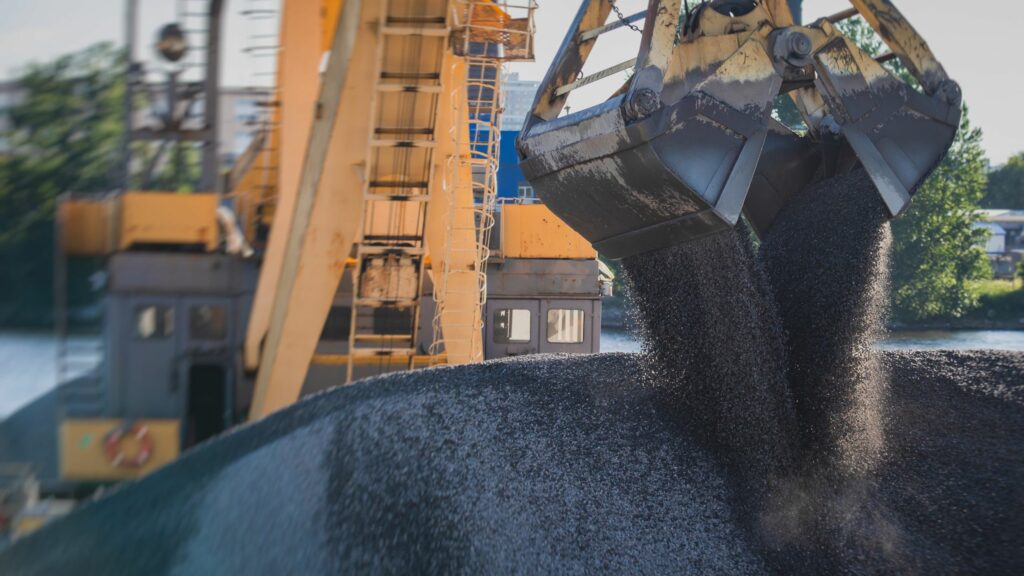
The principle is straightforward: the larger the shipment, the lower the relative cost of transport, rendering it an economically efficient choice for transporting coal over long distances.
Efficiency in handling and transportation stands as a cornerstone advantage in the bulk shipping of coal. The deployment of specialized bulk carriers and cargo ships, equipped with advanced loading and unloading technologies such as conveyor belts and grab cranes, streamlines the entire process. This not only minimizes the time vessels spend docked but also cuts down on labor costs, contributing significantly to the economic viability of bulk shipping.
The primary methods of bulk coal shipping are sea transport and rail transport. Sea transport utilizes bulk carriers and cargo ships, designed to maximize cargo space and enhance the efficiency of long-distance coal transportation. These vessels are pivotal for international coal trade, allowing for the movement of large quantities of coal across oceans.
Rail transport, on the other hand, employs hopper cars and unit trains specifically designed for coal shipment. This method is essential for land-based transportation, connecting coal mines directly to ports or end-users, such as power plants and steel mills. Both methods are foundational to the global coal supply chain, ensuring the efficient and reliable delivery of coal from production sites to markets worldwide.
Sea transport stands as a cornerstone for bulk coal shipping, utilizing bulk carriers and cargo ships to ferry vast quantities of coal across the seas. This method is pivotal for international trade, enabling the seamless flow of coal from key production zones to global markets.
Bulk carriers and cargo ships are engineered with efficiency and safety in mind, tailored for the bulk transportation of commodities like coal. These vessels boast expansive cargo holds and are designed for optimal stability and speed, making long-distance coal transport both economical and reliable.
| Type of Vessel | Capacity (DWT*) | Description |
|---|---|---|
| Panamax | 60,000 – 80,000 | Can pass through the Panama Canal; commonly used for coal transport. |
| Capesize | Over 100,000 | Too large to pass through the Panama Canal and must go around the Cape of Good Hope or Cape Horn; used for very large bulk shipments. |
*DWT: Deadweight tonnage
Rail transport is integral to the coal distribution network, particularly for conveying coal from mining sites to ports or directly to consumers. Renowned for its dependability and capacity to efficiently manage substantial volumes of coal, rail transport is a linchpin in domestic coal logistics.
Hopper cars and unit trains are specialized for coal transport via rail, enhancing the efficiency and speed of deliveries. Hopper cars facilitate rapid loading and unloading of coal, while unit trains, composed entirely of these cars, optimize the quantity of coal moved per journey, significantly boosting the efficiency of rail-based coal transport.
| Rail Transport Method | Capacity | Description |
|---|---|---|
| Hopper Cars | Varies; typically around 100 tons per car | Designed for bulk cargo such as coal; allows for bottom unloading. |
| Unit Trains | 100-150 cars per train | A train where all cars are shipped from the same origin to the same destination, without being mixed with other cargo, maximizing transport efficiency. |
Major Coal Shipping Routes and Rail Networks
| Method | Example Routes/Networks | Description |
|---|---|---|
| Sea Transport | Australia to China | One of the busiest coal shipping routes, connecting major Australian coal mines with the world’s largest coal consumer. |
| Rail Transport | Powder River Basin (USA) to Ports | Links one of the largest coal mining areas in the US to major ports for domestic and international shipping. |
The choice of bulk shipping method for coal is influenced by several key factors, including distance to destination, cost considerations, and environmental regulations.
These factors collectively guide the selection of the most appropriate, efficient, and sustainable method for shipping coal in bulk, balancing economic, logistical, and environmental considerations.
| Factor | Influence on Choice of Shipping Method | Details |
|---|---|---|
| Distance to Destination | Sea transport is preferred for long-distance, international shipments due to its efficiency in moving vast volumes. Rail transport is often chosen for shorter, domestic routes where direct land connectivity is an advantage. | – Sea transport for distances exceeding 1,000 miles – Rail transport for distances under 1,000 miles |
| Short vs. Long Haul Considerations | Short hauls benefit from the speed and flexibility of rail transport, whereas long hauls utilize the economical scale of sea transport. | – Rail for rapid, flexible short-distance transport – Sea for cost-effective long-distance transport |
| Cost Considerations | A comprehensive analysis of fuel, labor, and infrastructure expenses to find the most economically efficient method. | – Sea transport for reduced fuel costs over long distances – Rail transport for lower labor and infrastructure costs on land |
| Fuel, Labor, and Infrastructure Costs | Each mode of transport incurs different levels of these expenses, influencing the choice based on economic efficiency. | – Fuel efficiency of sea vessels vs. trains – Labor costs associated with port and rail operations – Infrastructure availability and investment |
| Environmental Regulations | The need to meet emission standards and pollution control measures can guide the selection towards more environmentally sustainable options. | – Sea transport affected by MARPOL Annex VI – Rail transport influenced by local emission regulations |
| Emission Standards and Pollution Control | Stricter standards promote the use of cleaner technologies in both sea and rail transport, aiming to reduce environmental impact. | – SOx and NOx limits for ships – Emission controls for locomotives |
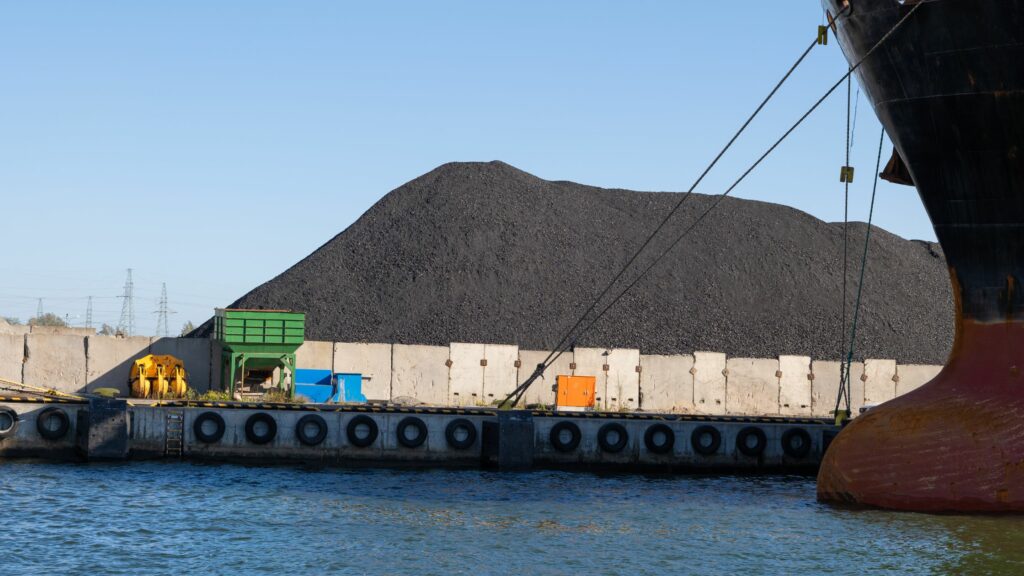
The environmental impacts of bulk coal shipping are significant, encompassing emissions from transportation, potential for spills and contamination, and the broader effects on water pollution and habitat disruption. Transportation of coal, whether by sea or rail, generates emissions such as CO2, SOx, NOx, and particulate matter, contributing to air pollution and climate change. Moreover, the risk of coal spills during loading, unloading, and transit can lead to soil and water contamination, adversely affecting marine and terrestrial ecosystems.
Additionally, the infrastructure required for bulk coal shipping, including ports and rail lines, often disrupts local habitats and waterways, potentially leading to loss of biodiversity and alteration of ecosystems. These impacts highlight the need for stringent environmental regulations and cleaner shipping technologies to mitigate the ecological footprint of bulk coal transport.
Bulk coal transportation is associated with significant emissions, including CO2, SOx, NOx, and particulate matter. These pollutants are key contributors to air pollution and climate change, presenting serious challenges to environmental health and sustainability.
| Emission Type | Impact on Environment | Health Effects |
|---|---|---|
| CO2 (Carbon Dioxide) | Global warming, climate change | – |
| SOx (Sulfur Oxides) | Acid rain, water pollution | Respiratory problems, lung damage |
| NOx (Nitrogen Oxides) | Smog, acid rain, water quality deterioration | Respiratory issues, cardiovascular problems |
| Particulate Matter | Air pollution, visibility reduction | Respiratory and cardiovascular diseases |
The risk of spills and contamination during the bulk shipping of coal is a significant concern. Accidental releases can lead to soil and water pollution, severely affecting marine and terrestrial life, and potentially compromising human health by contaminating drinking water sources.
| Incident | Location | Date | Environmental Impact |
|---|---|---|---|
| Coal Spill Example 1 | Example Location 1 | Date 1 | Brief description of impact |
| Coal Spill Example 2 | Example Location 2 | Date 2 | Brief description of impact |
The necessary infrastructure for bulk coal shipping, such as ports and rail networks, along with the risk of spills, contributes to water pollution and habitat disruption. These activities can result in biodiversity loss and ecosystem changes, adversely impacting wildlife and plant species in affected areas.
| Infrastructure Type | Impact on Environment | Example Locations |
|---|---|---|
| Ports | Habitat destruction, water pollution | Example Port 1, Example Port 2 |
| Rail Lines | Habitat fragmentation, noise pollution | Example Rail Line 1, Example Rail Line 2 |
The safety of bulk coal shipping is ensured through a comprehensive approach that includes regulations and standards, adherence to International Maritime Organization (IMO) guidelines, and the implementation of advanced safety measures and technologies.
Regulations and standards form the backbone of safety protocols in bulk coal shipping. These comprehensive guidelines dictate crucial practices for the safe handling and transportation of coal, aiming to significantly reduce associated risks. They encompass a broad spectrum of safety concerns, from vessel construction specifications to operational procedures, ensuring a consistent safety standard throughout the industry.
The International Maritime Organization (IMO) issues international guidelines that are fundamental to maintaining safety in bulk coal shipping. These guidelines address the structural integrity of bulk carriers, the secure stowage and handling of coal, and measures to prevent environmental pollution. Adherence to IMO regulations is key to enhancing safety and environmental stewardship on a global scale.
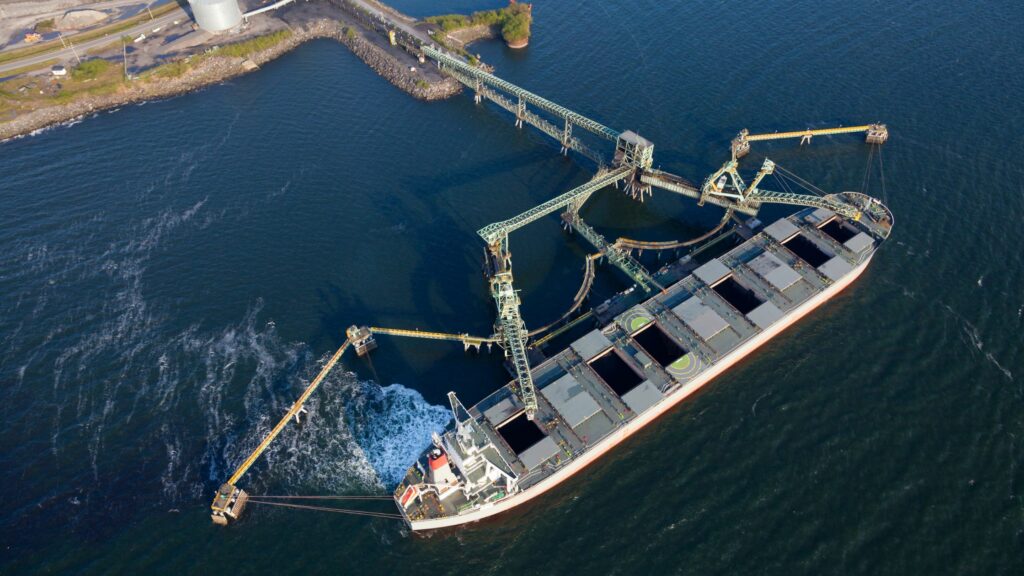
Advancements in safety measures and technologies are critical for bolstering the safety of bulk coal shipping. This includes the development of stronger materials for shipbuilding, sophisticated navigation and emergency response systems, and protocols designed to prevent and manage accidents. Such technologies are integral to preventing mishaps and minimizing their consequences.
Innovations in real-time tracking and automated handling systems mark a significant leap forward in shipping safety technology. Real-time tracking systems allow for the ongoing monitoring of a ship’s position and the status of its cargo, facilitating prompt action when issues arise. Automated handling systems, on the other hand, reduce the potential for human error during loading and unloading operations, further enhancing the safety and efficiency of bulk coal transport.
| Safety Aspect | Description | Examples |
|---|---|---|
| Regulations and Standards | Guidelines for safe coal transport | SOLAS (Safety of Life at Sea), MARPOL (International Convention for the Prevention of Pollution from Ships) |
| IMO Guidelines | International standards for ship safety and environmental protection | IMSBC Code (International Maritime Solid Bulk Cargoes Code) |
| Safety Measures and Technologies | Advanced technologies for ship safety | ECDIS (Electronic Chart Display and Information System), AIS (Automatic Identification System) |
| Real-time Tracking and Automated Handling Systems | Technologies for monitoring and handling cargo | GPS tracking for ships, Automated crane systems for loading/unloading |
This detailed approach to ensuring the safety of bulk coal shipping highlights the industry’s commitment to operational safety, environmental protection, and the well-being of all involved in the coal transport process.
The future trends in bulk coal shipping are influenced by a shift towards cleaner energy sources, a decreased demand for coal shipping, and advances in transportation technology. The move towards more environmentally friendly energy sources is expected to result in a gradual decline in the demand for coal shipping. This shift is prompting the industry to adopt greener practices and technologies.
Advances in transportation technology, such as LNG-powered ships and electrified rail systems, are pivotal in making coal shipping more sustainable. These innovations offer cleaner alternatives to traditional fossil-fuel-powered modes of transport, significantly reducing emissions and the overall environmental footprint of shipping operations. Furthermore, the industry is likely to witness an increased adoption of real-time tracking and automated handling systems, aimed at boosting operational efficiency and safety.
The shift towards cleaner energy sources marks a pivotal change affecting the future dynamics of bulk coal shipping. As the global community intensifies its efforts to combat climate change, there’s an escalating shift towards renewable and less carbon-intensive energy alternatives. This transition is poised to negatively impact the demand for coal, as cleaner energy sources gain traction in the global energy portfolio.
A decreased demand for coal shipping emerges as a natural consequence of the world’s pivot towards sustainable energy practices. With nations and enterprises alike pledging to slash carbon emissions, the dependence on coal as a staple energy resource is waning. This evolving scenario prompts a strategic reassessment within the coal shipping sector, emphasizing the need to diversify and adapt to a rapidly transforming energy landscape.
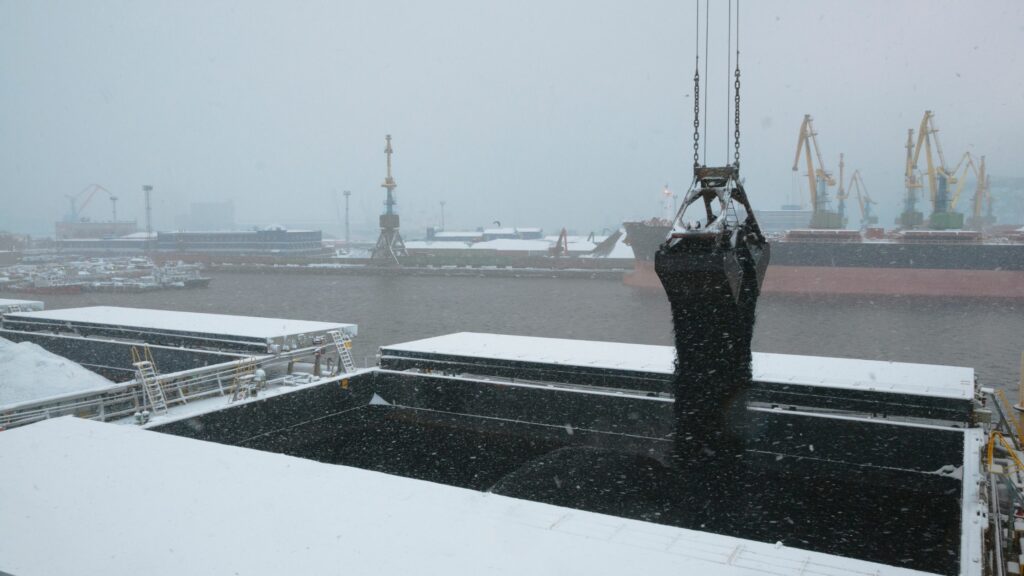
Advances in transportation technology are at the heart of redefining the future contours of bulk coal shipping. Cutting-edge developments in vessel design, propulsion technologies, and operational efficiencies are instrumental in diminishing the environmental footprint of coal transport. These innovations are crucial for sustaining the industry’s relevance in an increasingly eco-conscious global milieu.
LNG-powered ships and electrified rail systems stand at the vanguard of eco-friendly transport innovations within the coal shipping arena. LNG-powered vessels present a greener alternative to conventional heavy fuel oil, markedly curtailing emissions of SOx, NOx, and particulate matter. Conversely, electrified rail systems offer a sustainable solution for overland coal transportation, significantly reducing the rail segment’s carbon footprint.
Collectively, these technologies are instrumental in steering bulk coal shipping towards a more sustainable and environmentally responsible future.
| Trend | Description | Examples/Impact |
|---|---|---|
| Shift Towards Cleaner Energy Sources | Global efforts to combat climate change are leading to a shift towards renewable and less carbon-intensive energy alternatives, impacting the demand for coal. | Increased investment in renewable energy projects, policy shifts towards carbon neutrality. |
| Decreased Demand for Coal Shipping | As cleaner energy sources gain traction, the demand for coal shipping is expected to decline, prompting the industry to adapt. | Reduction in coal-fired power plant operations, increased use of natural gas and renewables. |
| Advances in Transportation Technology | Innovations in vessel design and propulsion technologies aim to reduce the environmental footprint of coal transport. | Development of LNG-powered ships, electrified rail systems for cleaner transportation. |
| LNG-Powered Ships and Electrified Rail Systems | These eco-friendly transport innovations offer alternatives to traditional fossil-fuel-powered modes, reducing emissions and environmental impact. | Implementation of LNG propulsion in new bulk carriers, adoption of electrified rail systems for coal transport. |